
A perfect trip to Hanoi
As Vietnam’s capital Hanoi has a lot to offer, from delectable food and a great coffee culture, a fascinating history and interesting architecture, there is something for everyone. Only the traffic is hard to manage, but you will get used to it. The best time for a trip to Hanoi, in my opinion, is from March to May, just outside the rainy season and before the main travel season. The weather is hot and humid, but that’s always the case.
This is an overview of my trip to Hanoi so you can plan yours easily!
This post contains affiliate links to things like tours and hotels. These help me earn a small commission at no additional charge to you. Every affiliate link is marked with a *.
Overview of a perfect trip to Hanoi
- Where to stay in Hanoi
- Must-try foods in Hanoi
- Must-see museums in Hanoi
- Notable Places to visit for free on your trip to Hanoi
- What to do in Hanoi
- Day-Trips from Hanoi
- Tips for your Hanoi trip
- TLDR, show me a map with everything important
Where to stay during your trip to Hanoi
Similar to pretty much everywhere in Vietnam, Hotels and AirBnB can be both high-quality and affordable choices. Of course, there are also Hostels, which are mostly frequented by young backpackers and are great if you are one and want to meet like-minded people. But for everyone who is a bit older, chronically ill or just wants more privacy there are options.
The Old Quarter* is the best district to stay in, in Hanoi, since it is walkable, most sights and attractions are there, as well as great food and delicious coffee.
I stayed in a room at Wecozy Nội Miếu, with my own bathroom and a communal kitchen. The room was spacious, the bed was comfortable, the filtered water from the kitchen was a big plus, but above all it was clean and quiet, despite being in the most busy district of the city.
They have a second building near the famous Hanoi Train Street: WECOZY HANOI – Railway Side, The Old Quarter* with many different rooms and apartments to rent.
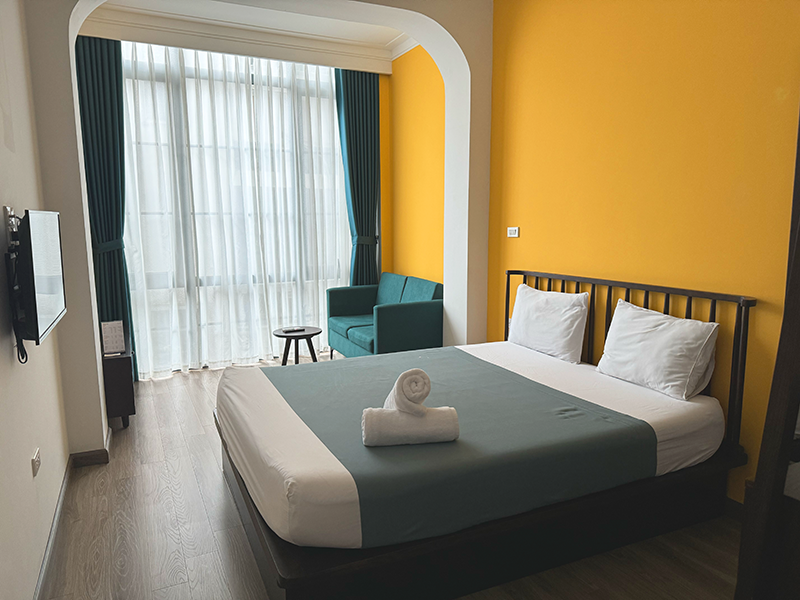
Must-try foods on your trip to Hanoi
The main reason I wanted to go to Vietnam in the first place was the food. During the time I was there, I tried something new every day. This is my list of must-eat foods in Hanoi: What to eat, where to eat it and how much money to plan for food in the budget (spoiler: it’s not a lot).
I linked all of the mentioned foods in the map at the end of the blogpost!
Xôi xéo is sticky rice with shaved mung bean, chicken fat, crunchy fried onions and pork floss. It’s delicious and fills you up for the entire day without making you feel stuffed. It was my favourite breakfast I had in Hanoi by far!
A Bánh mì is the perfect sandwich. Nothing more. Nothing less. You get a crispy baguette with different fillings. The one you get at most places has liver paté, fried pork, cucumber, carrots, coriander, chilli and soy sauce. My favourite was a pate and egg Banh Mi at Banh Mi Paté, a street food cart in the Old Quarter. It’s perfect for a quick snack, for breakfast, lunch or dinner. And it’s great to take on day tours if you’re not sure how much food is included!
Phở is Vietnam’s de facto national dish, a delicious soup with savoury broth, rice vermicelli, herbs, and beef strips. It’s delicious, it fills you up, it hydrates and especially when it’s cold (or raining) outside it’s the perfect meal. A famous spot in Hanoi “Pho 10” has even gotten a Michelin Star in 2023.
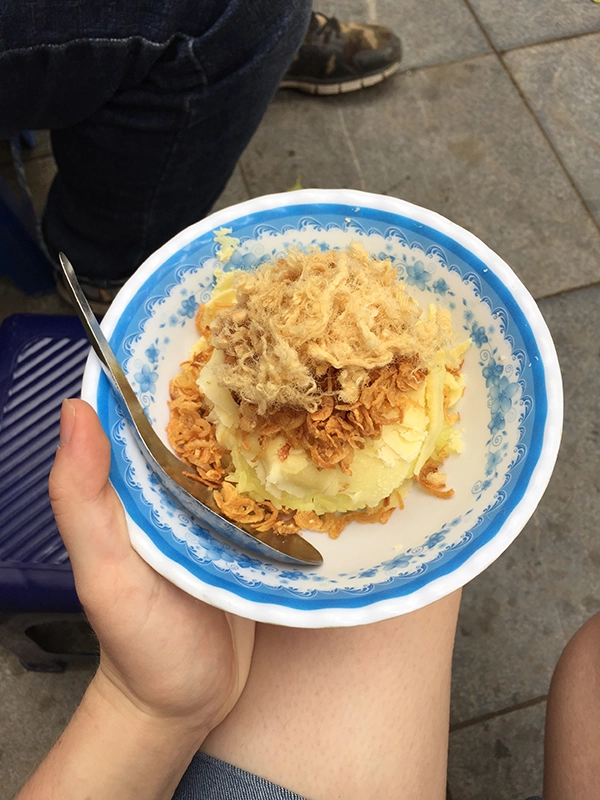
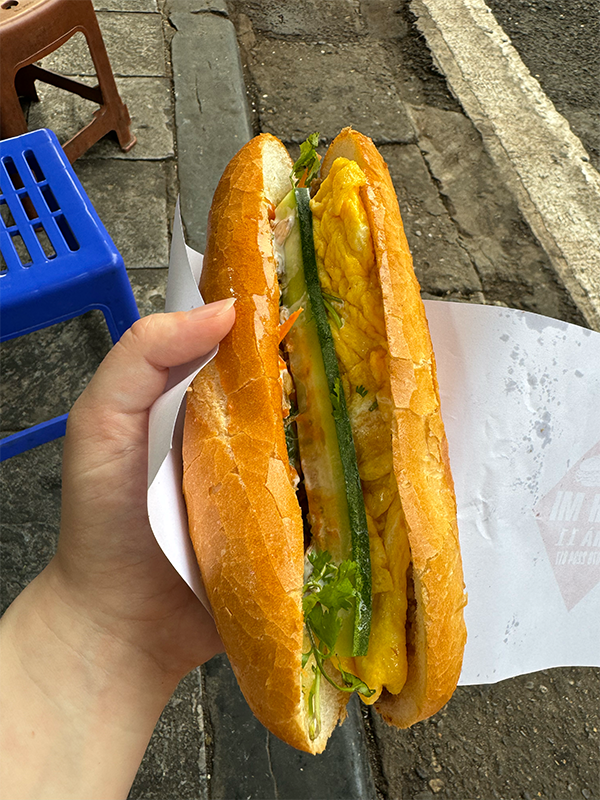
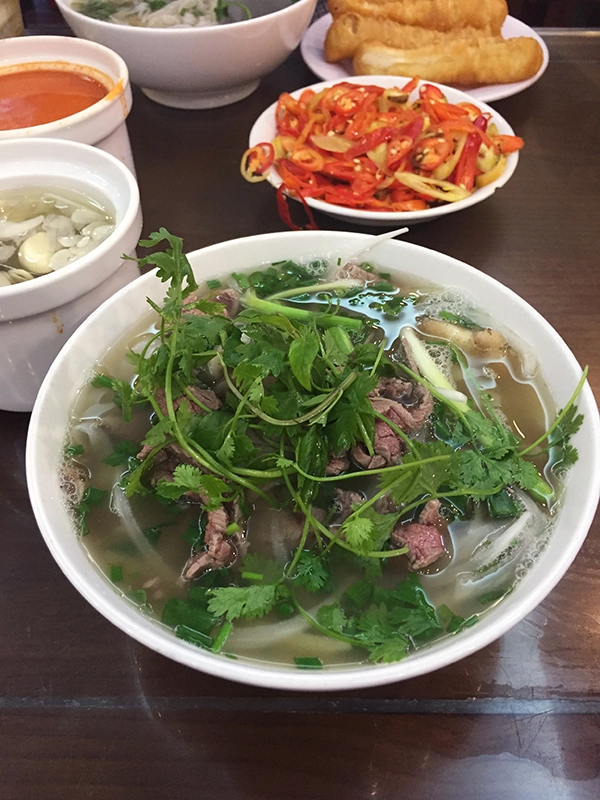
Bánh Rán are Vietnamese sticky rice doughnuts with mung bean filling and either coated in sesame, covered with sugar or drenched in honey or in the case of Bánh Rán Mặn filled with pork meat and wood ear mushroom. They are heavy but delicious street snacks. Be on the lookout for scammers selling days-old ones in baskets. The place I tagged on the map belongs to an old couple who have been selling them for years and fry them fresh several times a day.
Bánh Cuốn are a special kind of pancake, made by steaming a slightly fermented rice batter on a cloth that is stretched over a pot of boiling water. These thin rice pancakes are often eaten with fish sauce, fried shallots, and cha lua (Vietnamese pork sausage). They go great with a light beer.
Bún chả is a Vietnamese dish that became very famous when then US-President Obama ate it in a small restaurant in Hanoi. This soup like dish has of grilled fatty pork in a savory-sour sauce with young papaya inside, served with rice noodles and greens.
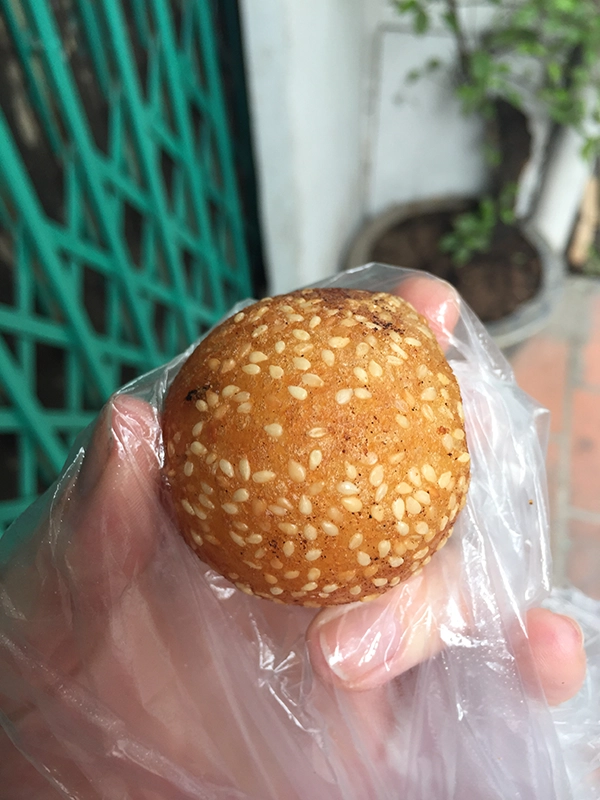
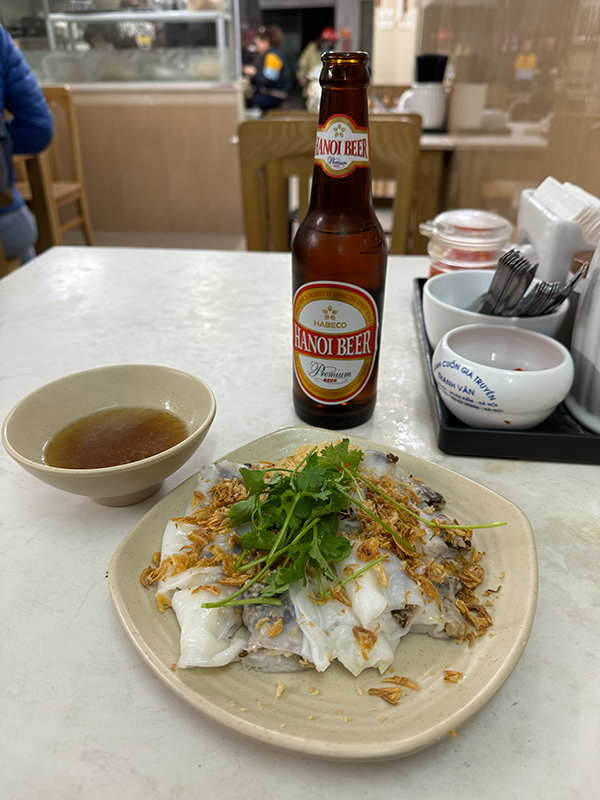
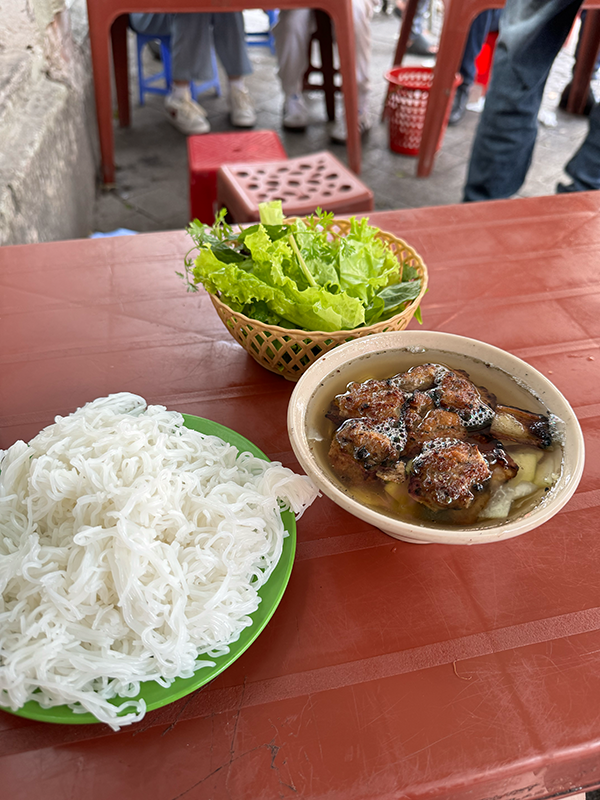
Egg coffee is made from egg yolk, sugar, coco powder and Vietnamese Phin Coffee. Cafe Giang is supposedly the birthplace of egg coffee when it was invented in 1946 by Mr. Nguyen Van Giang. Today egg coffee can be found at almost every café in Hanoi. The most “instagrammable” version of egg coffee is undoubtedly served at the two establishments of eggyolk coffee.
Banana Fritters or Bánh Chuối are bananas, battered and deep fried. They go incredibly well with a delicious dessert-like drink called coconut coffee, made from sweet slushy coconut ice cream, topped with espresso.
When you go to the hawker stall I linked in the map: Be decisive, but friendly. Don’t wait in line, you will never get food. Go to the front, get one of the ladies attention with a smile and a wave, point at the banh chuoi, show her how many you want, give her the money, get the food, leave. Then enjoy your snack with a coconut coffe in the cong cafe nearby.
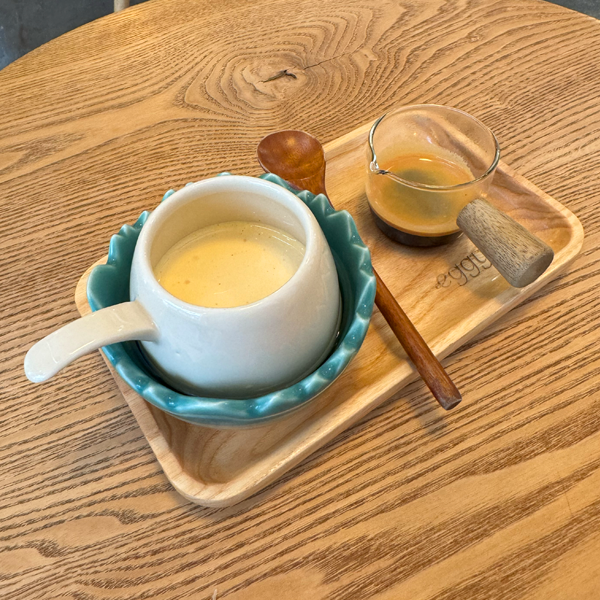
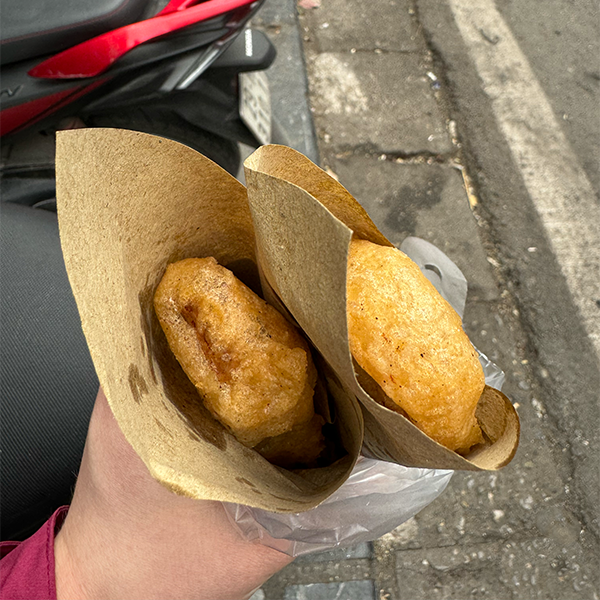

Our plate of Bún đậu had of vermicelli rice noodles, fried tofu, boiled pork leg, rice pork cake, intestine/blood sausage, fermented shrimp paste, greens and herbs. We also got green tea and chewing gum on the side, because if you eat the fermented shrimp paste your breath will smell horrible.
Travelling is an adventure. Food should be too. The fermented shrimp paste is not for everyone, but you’ll never know until you try it. Also if you are with a Vietnamese person they will love to watch your expression as you eat it.

Must-see Museums on your trip to Hanoi
Like most capitals of the world, Hanoi has a lot of museums to show off the country’s history, culture and traditions. They might not be the top spot on everyone’s to-do list while in the city, but even if you’re just here for a day or two you should try to incorporate at least one of these into your itinerary.
Temple of Literature
The Temple of Literature was the first university in the country, founded in the year 1070. Now it’s the museum in Hanoi that attracts the most visitors every year. This is a must-see for everyone who wants to learn about history, education or the history of education in Vietnam.
I was lucky to go here with a guide who was able to tell me about the history of the building and the traditions people still follow, but you can also get an audio guide.

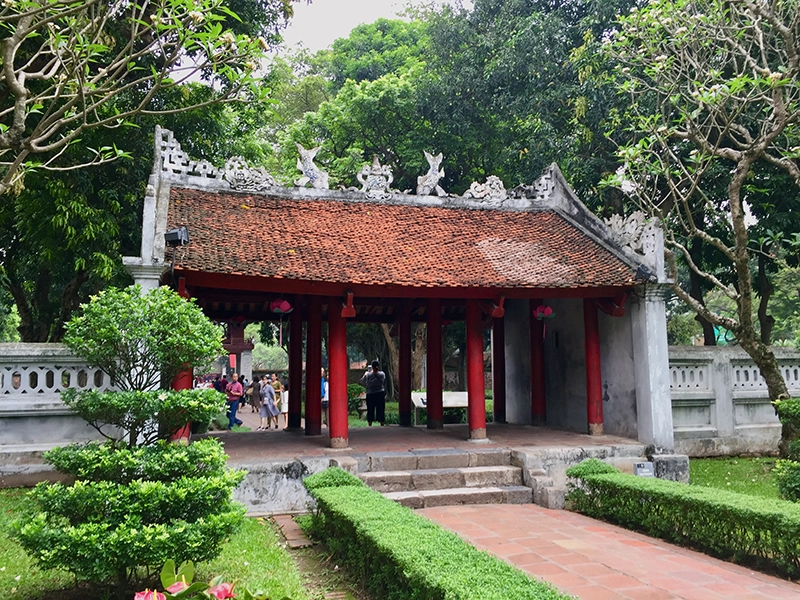
Museum of Ethnology
To get a comprehensive overview about Vietnam and it’s people, as well as the different minority groups and the origin of traditions all in one place visit the Museum of Ethnology. You’ll need 3 – 5 hours for this museum, it has an amazing audio guide, two buildings and an outdoor living-museum area!
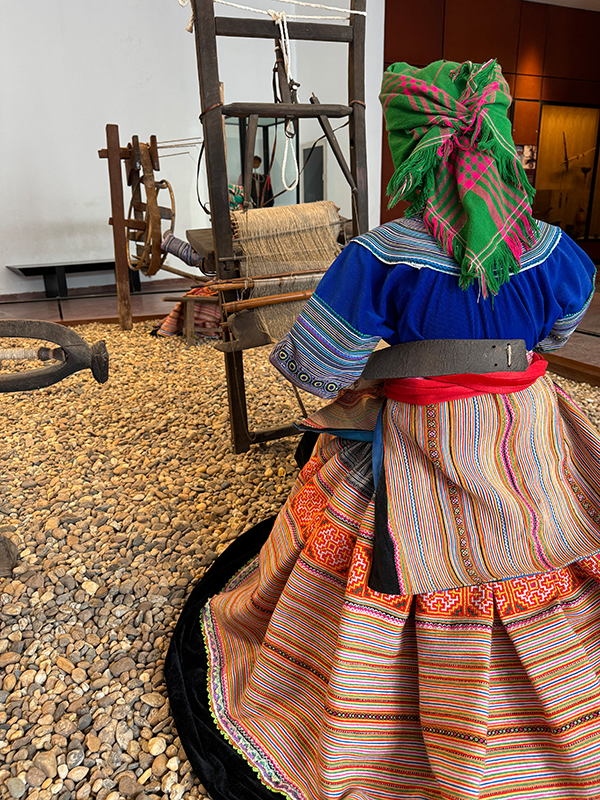
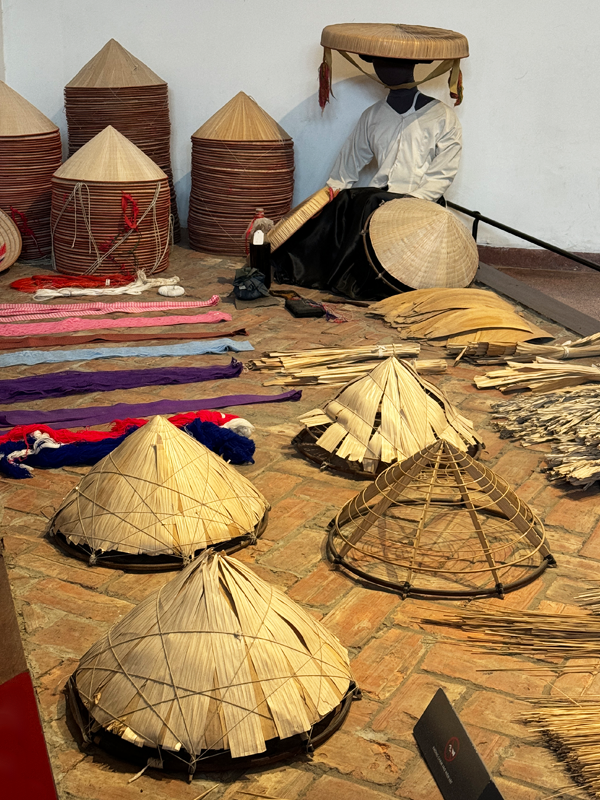
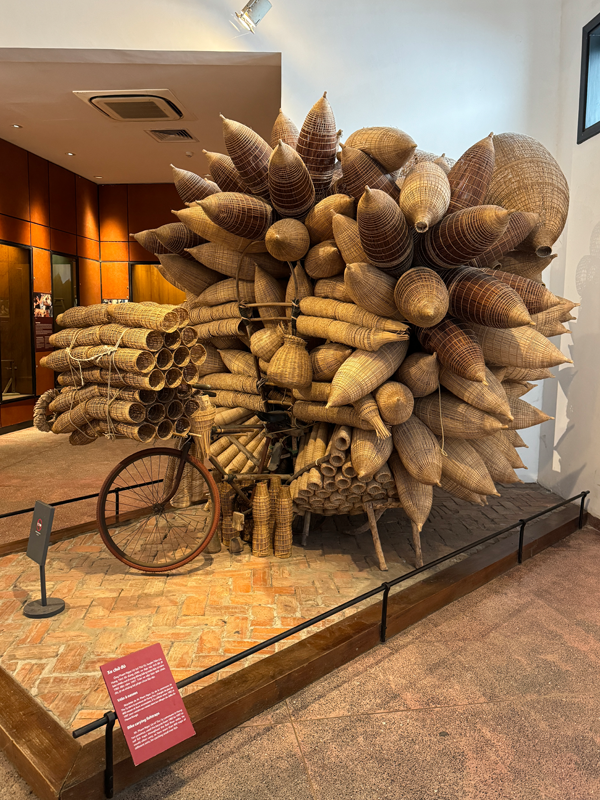
Vietnam National Museum of History
This museum covers the history of Vietnam from prehistoric times the different ruling dynasties, the French colonial regime, the war to drive out the French, the founding of the Democratic Republic of Vietnam up to the Vietnam-US war and the unification of the country.
Not only the exhibits inside the museum are interesting, the building the museum in located is interesting as well. It was built during the French colonial rule of Vietnam and originally served as the archaeological research institution of the French School of the Far East.
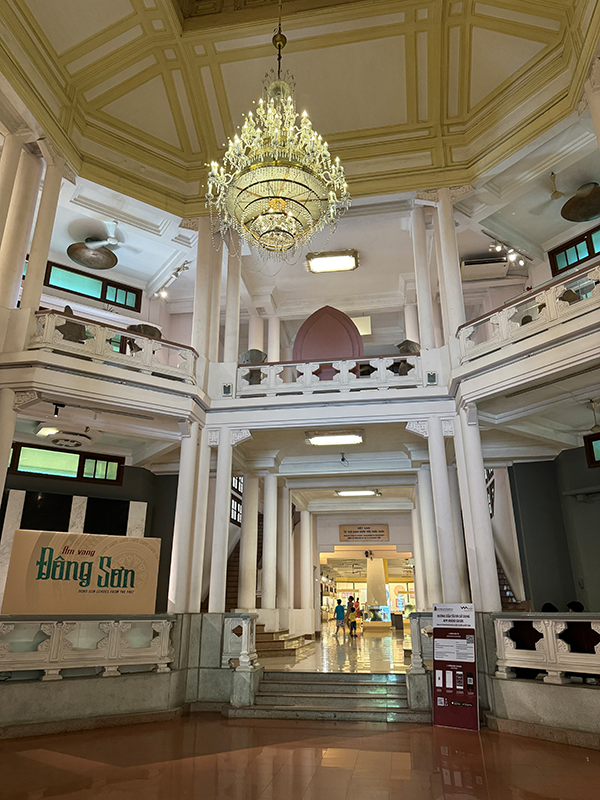
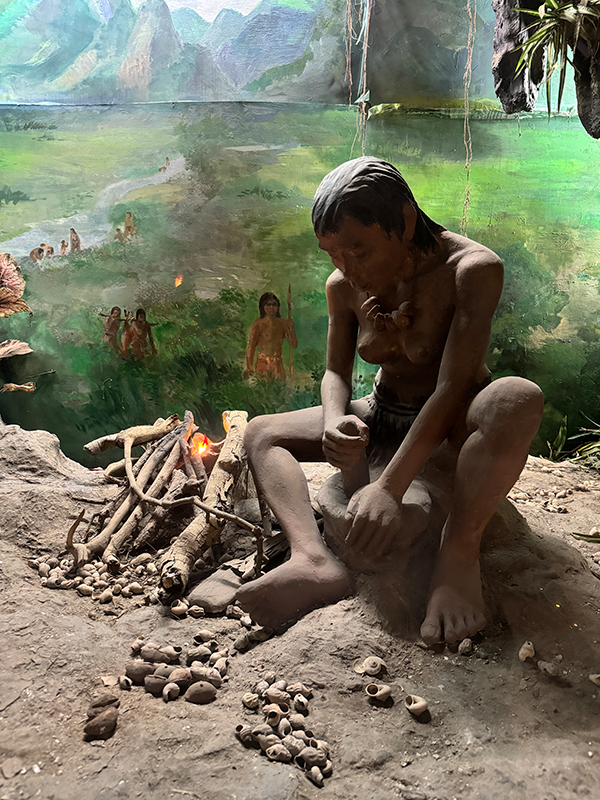

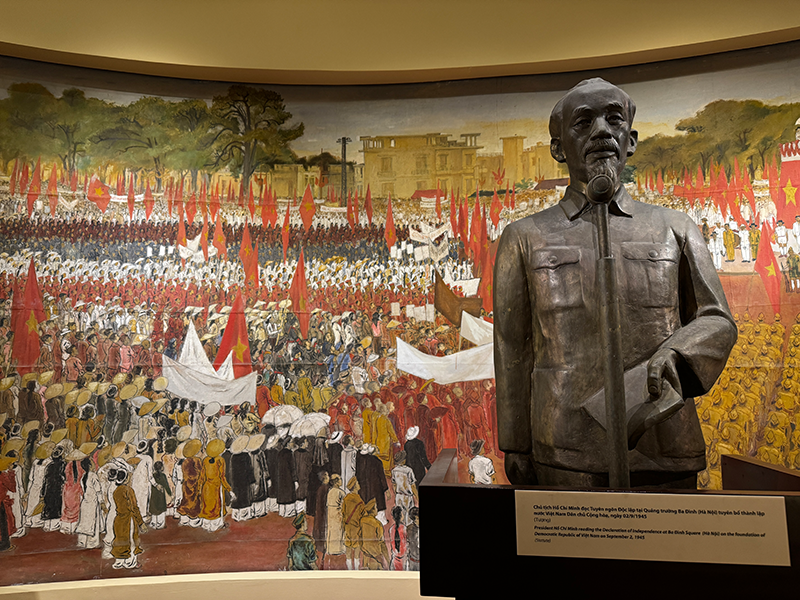
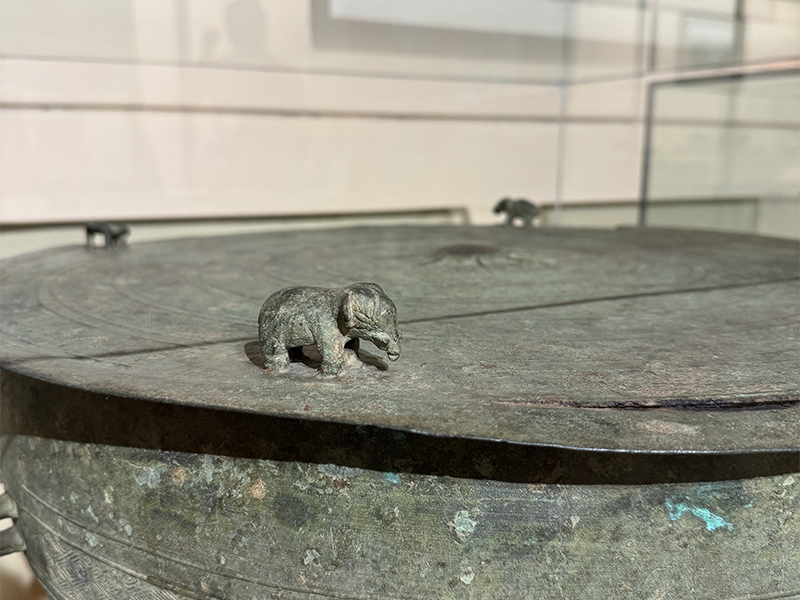
Vietnam National Fine Arts Museum
The National Fine Arts Museum of Vietnam in Hanoi is one of the best curated fine arts Museums you will ever see. It also has a super modern audio guide that works directly on your own phone with an app you can download on their free WiFi, with a pair of headphones you can lend for free (or use your own).
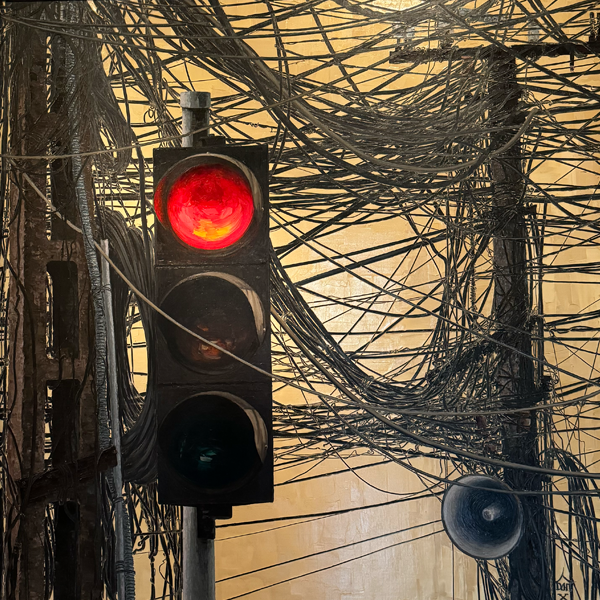
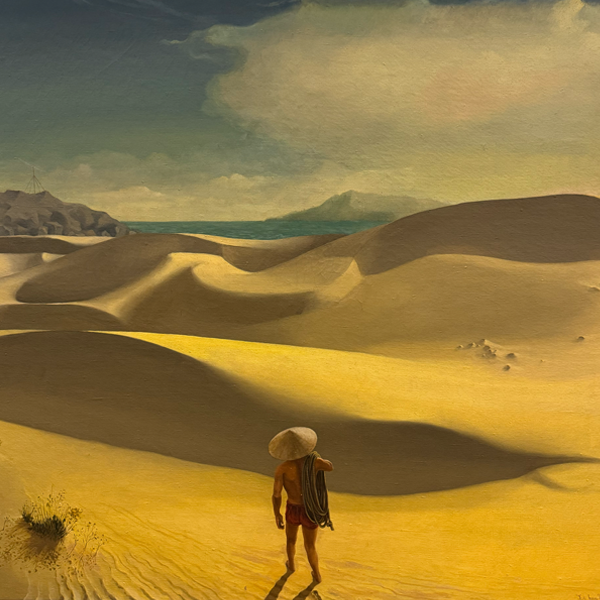

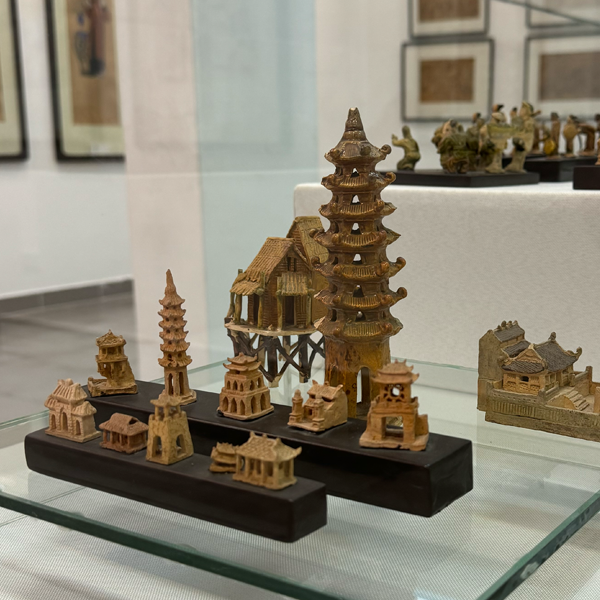
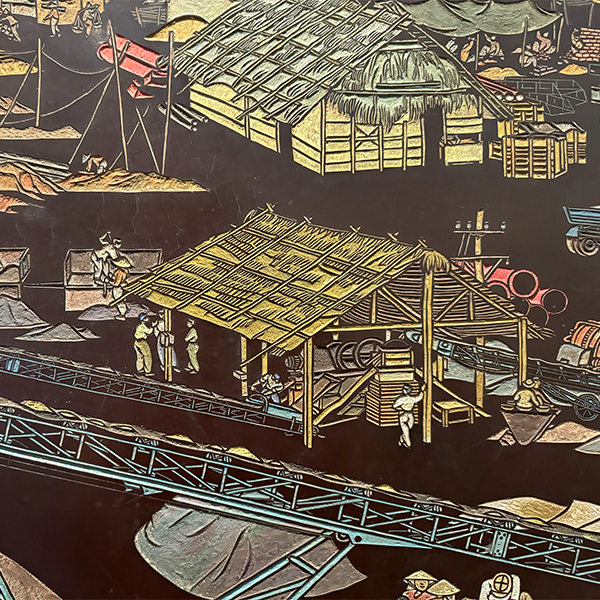
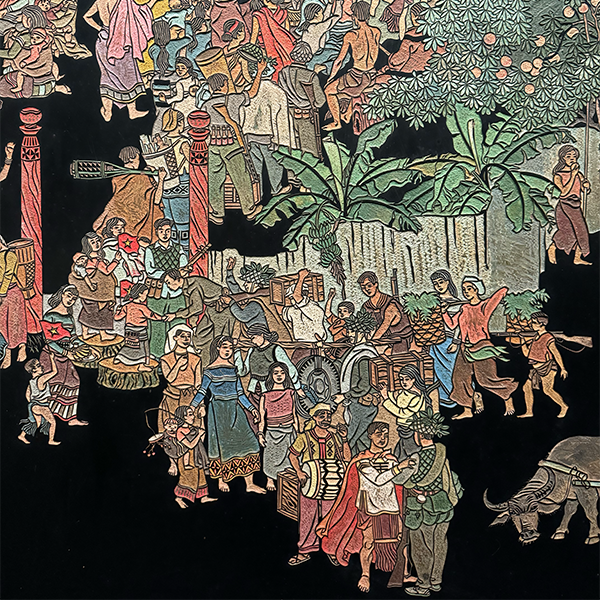
Vietnam Military History Museum
Both Hanoi and Ho Chi Min City have big military history museums, showcasing the war with the USA. While the fighting happened all over Vietnam, the two cities were the major players in the war with Hanoi being the capital of the Vietnamese Communists and Saigon (now Ho Chi Min City) being the capital of the Americans in Vietnam.
The military history museum in Hanoi is divided into several exhibitions. One is about the war effort, one about notable people who fought in the war and what they did, one about Ho Chi Min and then there are two changing ones. Outside of the main buildings, but still on the museum’s grounds, you can find an old fortification which you can climb, to see how people lived and worked who defended the city, as well as several planes, tanks, boats and other military machinery.
Maison Centrale – Hoa Lo Prison
Maison Centrale, otherwise known as Hoa Lo Prison, “Hell on Earth” by the Vietnamese prisoners during French colonialism or sarcastically “Hanoi Hilton” by imprisoned American soldiers during the Vietnam War, is a prison complex turned museum. I recommend this for everyone who wants to learn from history so the horrors of the past may not be repeated.
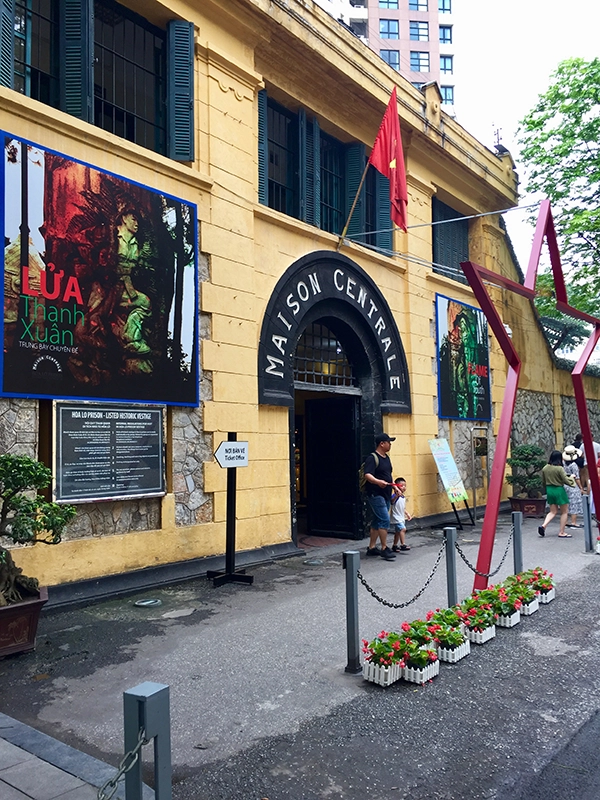
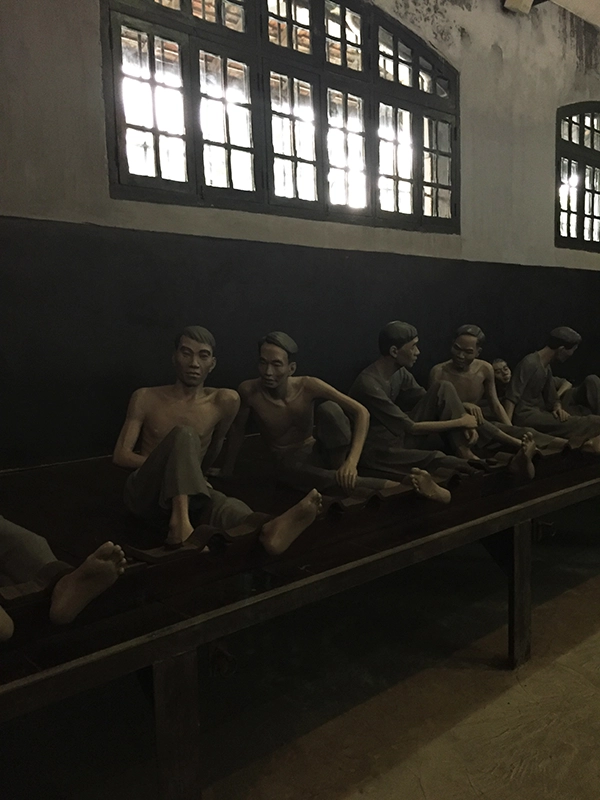
Imperial Citadel of Thăng Long
When you look up “Imperial Citadel Hanoi” most pictures will be of the Đoan Môn gate, but said gate is only one part of the Imperial Citadel of Thăng Long, which is a UNESCO World Heritage Site. Among other places, it also includes the flag tower and an archaeological site at 18 Hoàng Diệu Street. Those ruins were discovered in 2008 and belong to the former imperial city. The digging site is still being worked on, but it is open to the public. The compound is right between the National Assembly Building and the Ministry of Defence.
Inside the citadel, you can also find house D67, which was used during the war between 1954 and 1975 as the military headquarters of the People’s Army of Vietnam. The rooms look untouched from when they were in use (and are a great way to escape from the heat of the city).
Vietnamese Women’s Museum
The Vietnamese women’s museum is a very interesting one. Sure, a lot of it is propaganda, especially the entire floor about the war, but at the same time it gives a fascinating overview about:
- The role of women in the ancients tribes of Vietnam
- The role of women, a few handpicked ones in particular, during the Vietnam war
- Changes in women’s clothes over the centuries
- Vietnamese princesses and emperors’ wives and their impact on the country
- The religion or cult/sect/religion that worships „Mother Nature“

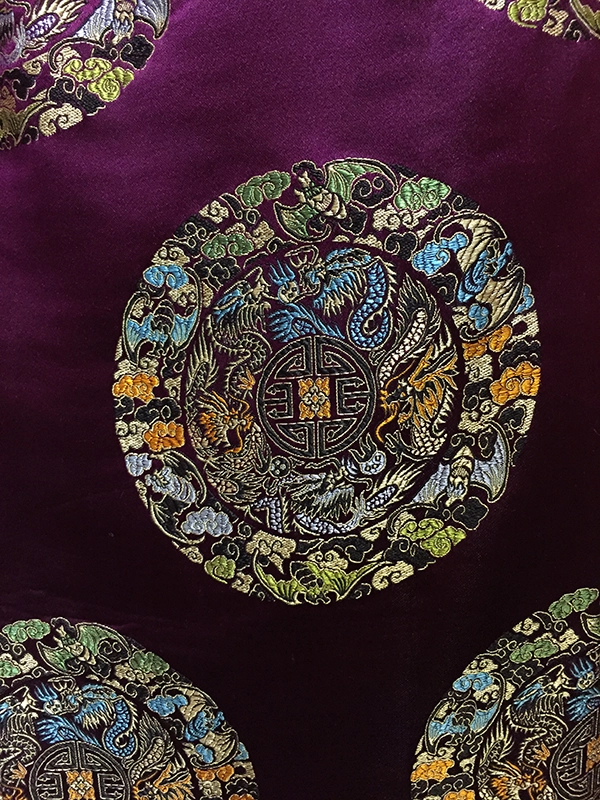
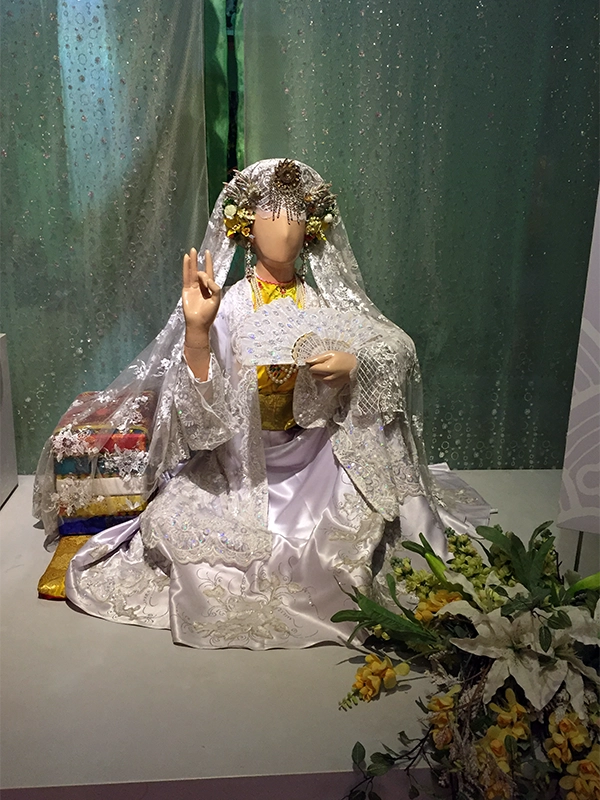
Ho Chi Minh Mausoleum
As a Vietnamese friend of mine put it “You wait for an hour to see a dead body for 15 seconds.” Of course, it isn’t as simple as that, but that’s an interesting way to look at it. I did not go inside the mausoleum itself, but I did spend several hours in the gardens and on the grounds of the mausoleum. In the gardens, you can see several hundred different plants from all over the country, as well as the one-pillar-pagoda, a famous small pagoda in the middle of a lake.

Ancient House
One of the remaining ancient houses of Vietnam, this living exhibition offers a glimpse into the past of the country. It is often quite full, so make sure to get there super early in the morning or go here with a guide who knows when the big tourist groups have passed through already.
Again, I was lucky to go here with a guide who could tell me about the history of the building, the traditions you can see inside and the meaning of several architectural specifics. I recommend this approach, as there are no plaques or explanations inside and you would miss a lot of the cultural specifics.

Notable Places to visit for free on your trip to Hanoi
Hoàn Kiếm Lake, adjacent to the Old Quarter is a small lake in the middle of the city. The streets around the lake are turned into a pedestrian zone every weekend. Around the lake families, students and seniors enjoy the spot of nature to sit, play or for exercise. In the middle of the lake, on an unreachable island stands the Turtle Tower. For many years large turtles called the lake their home, but sadly the last one was found dead sometime after 2015.
With the train passing through this narrow street, filled with colourful houses, shops and cafés the Train Street in Hanoi is a highly frequented Instagram-Photoshoot location. The cafes have been completely shut down before and now there are barriers in some places. Maybe the train street will one day return to the bustling spot it became famous as, but with how many people try to get as close to the moving train as possible to get the perfect shot, I seriously doubt it…
At its construction during the French colonial occupation of Vietnam / French Indochina Long Biên Bridge was one of the longest bridges in Asia. Today half the bridge is still original, with rustic (and rusting) metal pillars carrying the structure. It is still used as a railroad, but also by pedestrians and motorcyclists.
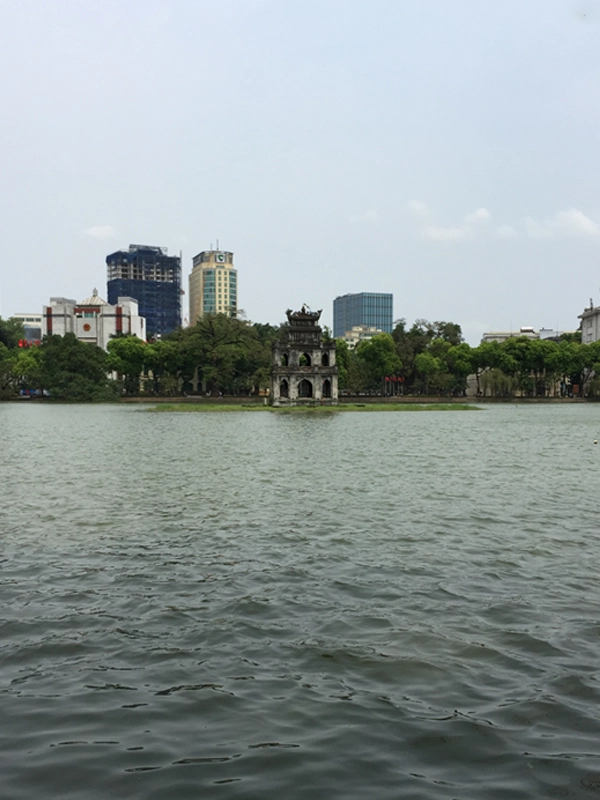

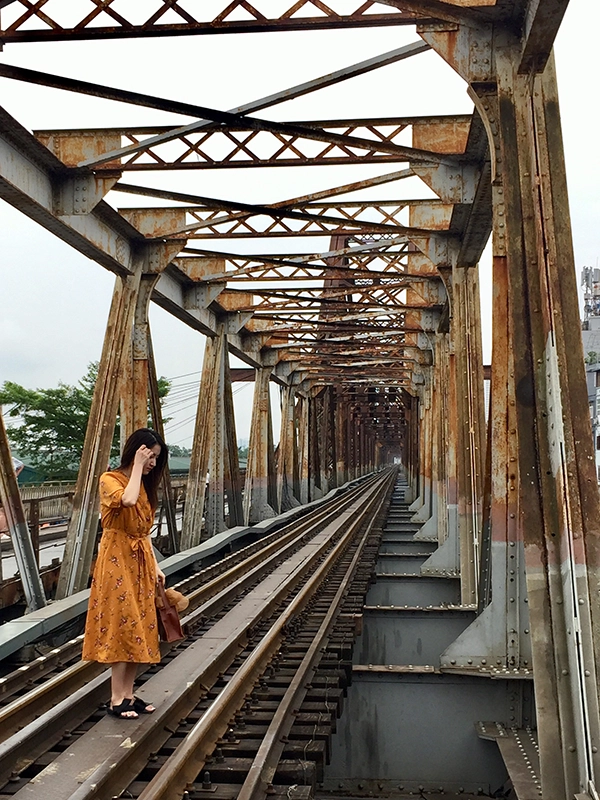
St. Joseph’s Cathedral was one of the first structures built by the French colonial government and is the oldest church in Hanoi. After the colonial period, the catholic church in Vietnam was persecuted, priests arrested and its assets and buildings seized. The church is not in a great state, but it was not destroyed either and since 1990 mass has been held here again.
Explore the Old Quarter! This hub of commerce reminds of the Hanoi of old. Tiny shops, cafes, workshops, hostels, homestays, restaurants and much more line the small maze like streets and alleyways. There is something to discover every step you take!
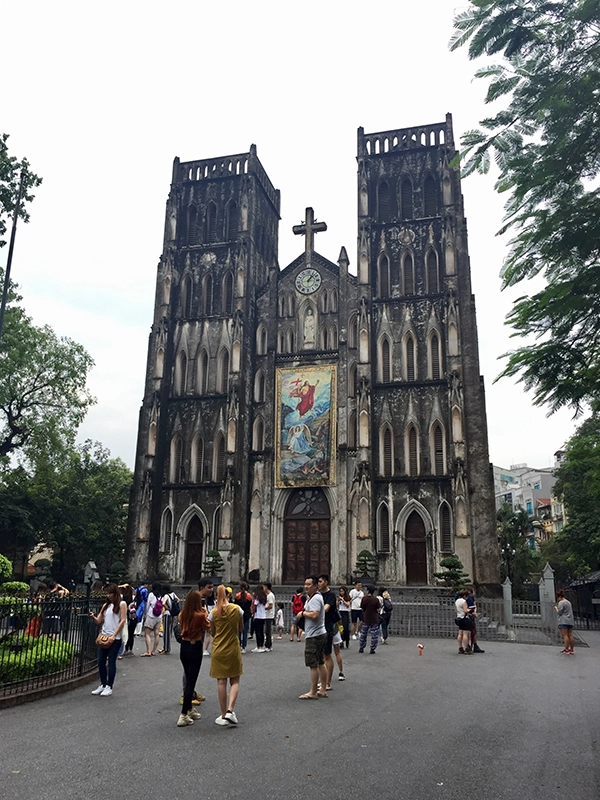
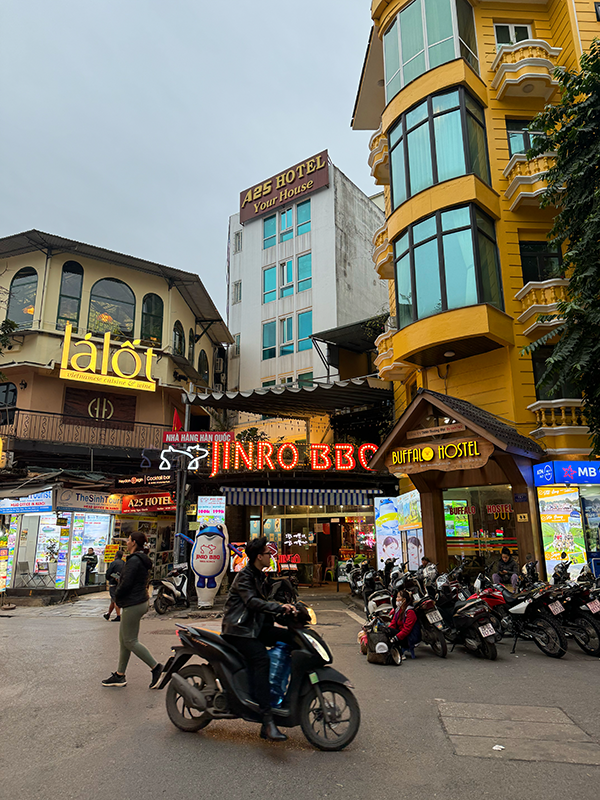

Along the Phùng Hưng street a Vietnamese-Korean street art project has turned a former railroad bridge into an outdoor gallery of street art murals depicting cultural and historical scenes from everyday life drawn in many different styles.
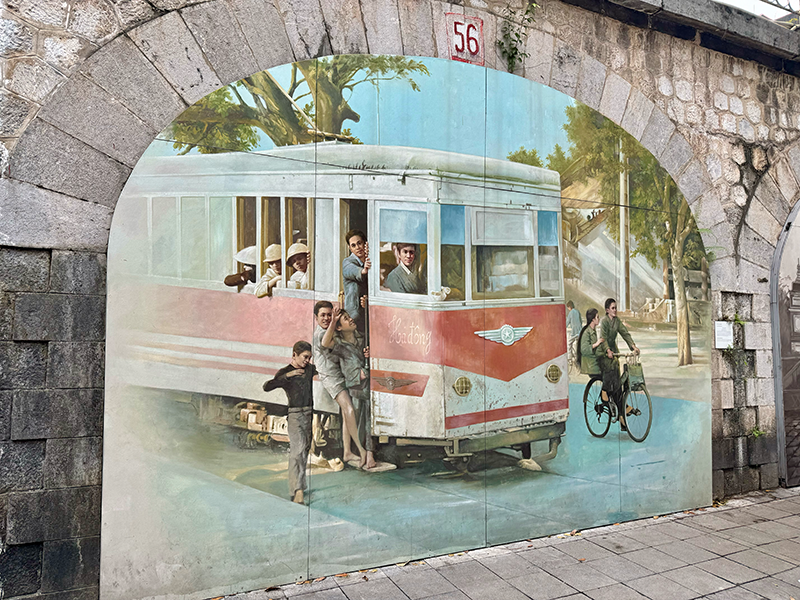

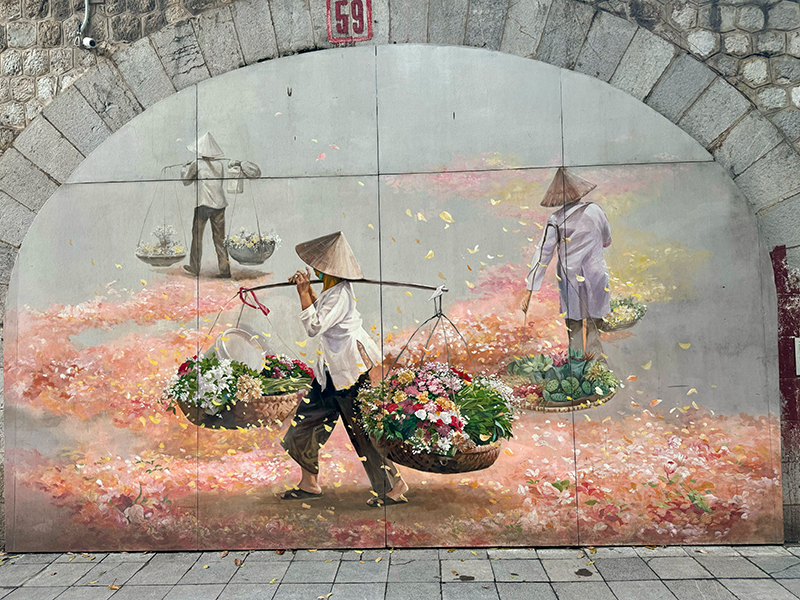
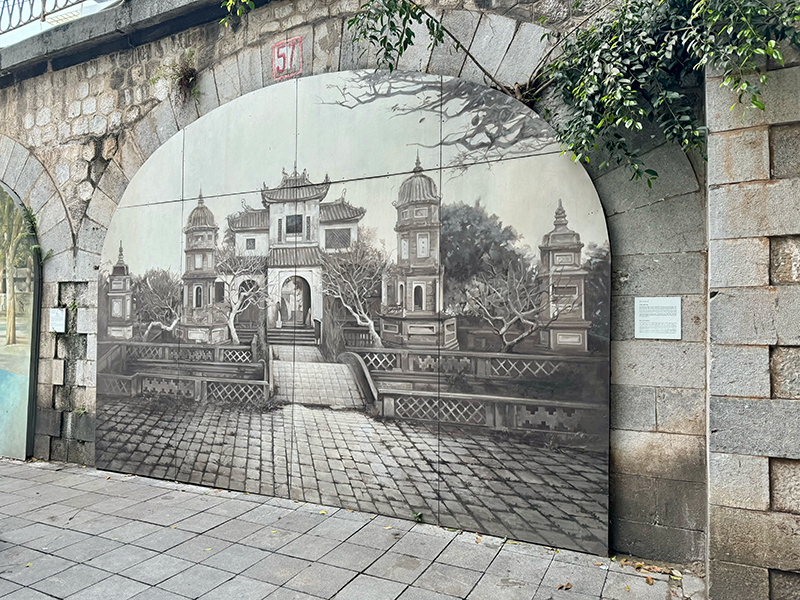
What to do in Hanoi
Silver Smith Workshop
Always on the lookout for unique things to do and more things to learn while travelling, I stumbled upon a silversmith workshop in Hanoi. In the silver crafting village Dinh Cong, about 30 minutes from the Old Quarter of Hanoi, held inside a community house, this workshop takes you back to the time when Hanoi was still called Thang Long (1010 AC).
More on my experience at the workshop here: Silversmith Workshop – Hanoi
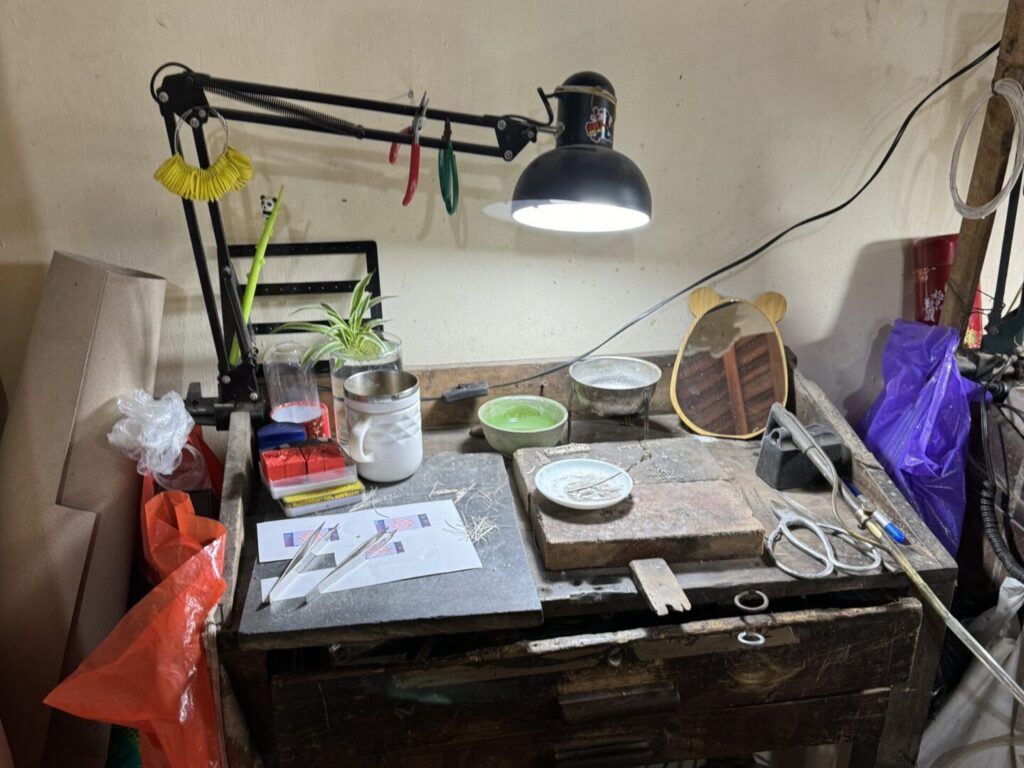
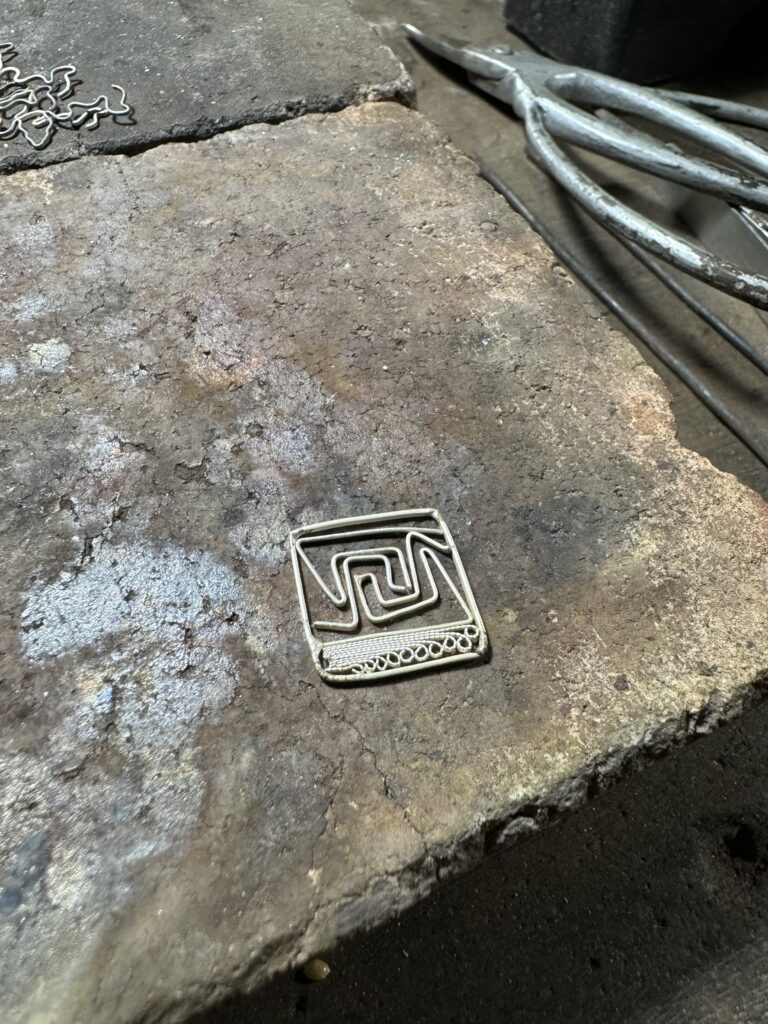

Traditional Watercolour Workshop
Watercolor painting is an art form that creates artistic representations using a real-hair brush on rice paper. Traditionally the pictures are focused on nature and natural elements. In this workshop we learned the basic techniques of watercolour painting and how to draw a certain flower.
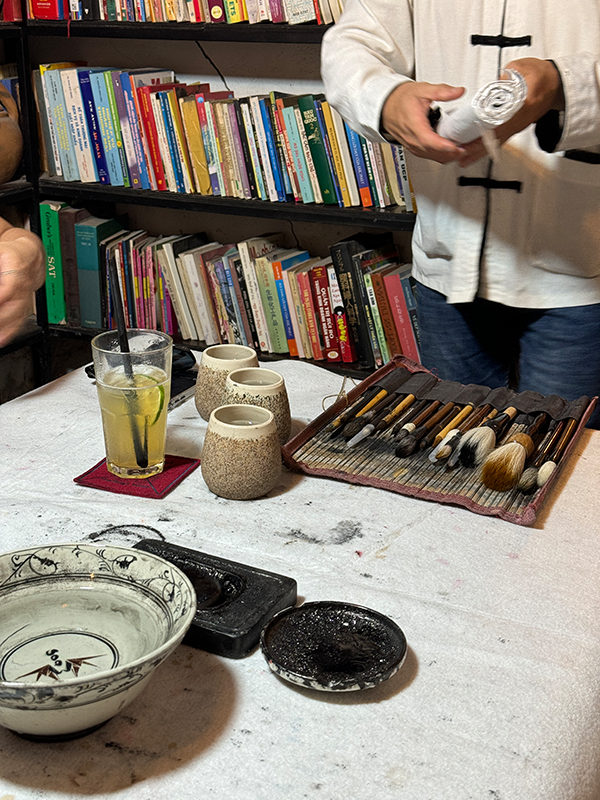

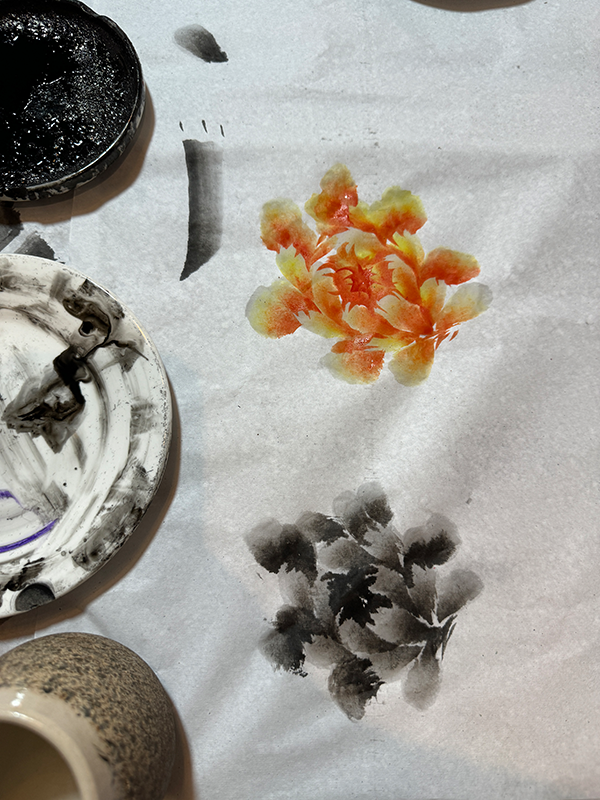
Thang Long Water Puppet Theater
Water puppetry in Vietnam dates back to the 11th century and has survived to this day. In the Old Quarter Hanoi you can see this age old tradition live at the Thang Long Water Puppet Theatre. The music and story are in Vietnamese, but you don’t have to understand the words to understand the story.
Dao’s Care
You might have heard of Thai Massages, but Vietnamese Massages are equally as amazing. At Dao’s Care near the West Lake, you can take a medical herbal bath, based on the herbal baths of the Dao tribe, or get a massage by one of their visually impaired masseurs. They are really talented with their hands and will have you leaving the place feeling refreshed, but also kind of mushy. It’s perfect after a long day of walking or an exhausting tour day!


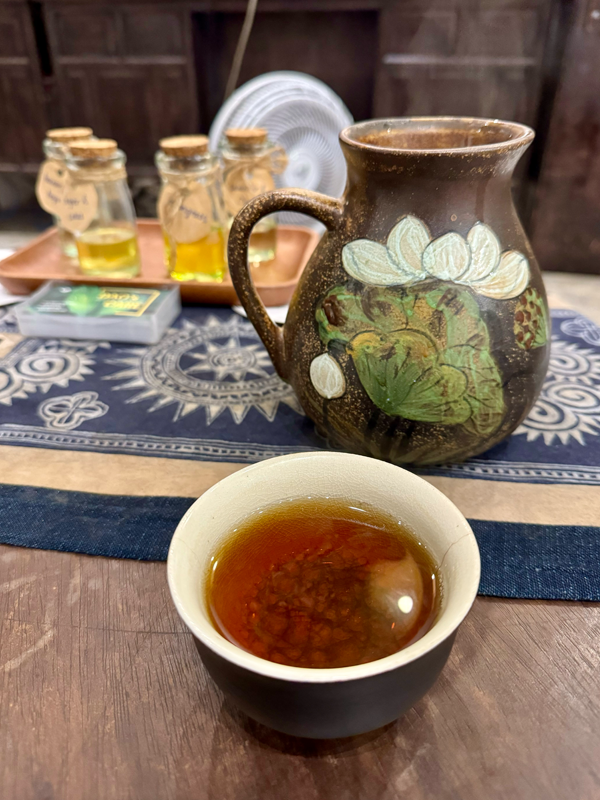
Go Bar Hopping in Hanoi
Hanoi has a very innovative cocktail scene, with many bars dotted over the city and the beer street where most tourists like to get tipsy off 1€ beer, there are some bars that stand out over others, such as The Haflington, Nê Cocktailbar and the Rabbit Habit in the Old Quarter as well as the Bar Dinh Rooftop Bar & Lounge which overlooks the West Lake.
You can read more about my experience and which cocktails I recommend here: Bar hopping in Hanoi – Vietnamese cocktail innovations
Visit the NAGOCHA Matcha House
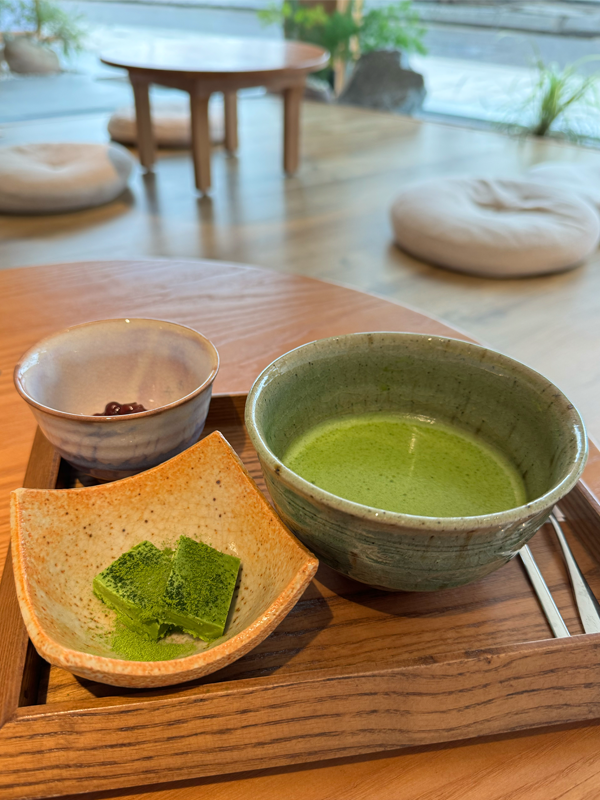

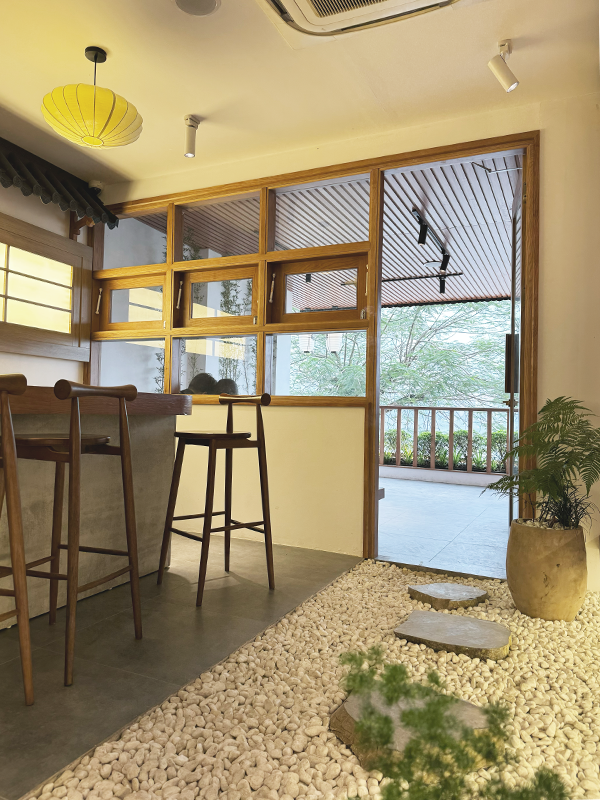
Day Trips from Hanoi
With it’s location in the centre of northern Vietnam Hanoi is the perfect starting point for day trips (or even two-day trips). Since there are numerous tour providers and guides it is important to do your research before booking your day trip so you won’t get scammed on your trip to Hanoi.
Ha Long Bay
On top of my list of places I wanted to see during my trip was Ha Long Bay; the Bay of the Descending Dragon, a UNESCO World Heritage Site, with over 2000 limestone mountains emerging from emerald water.
Its a 3-hour drive from Hanoi to Tuan Chau Marina, from where most Ha Long Bay cruises start. We were about 45 people on a boat similar to the one in the left picture. Every tour has a set of stops across the bay, like the Incense Burner Islet (featured on the 200.000 đồng note), Sung Sot Cave, Luon Cave and TiTov Island.
Despite several things being less than ideal on the tour to Ha Long Bay I went on, I would still say a visit is more than worth it, but I would recommend two days instead.

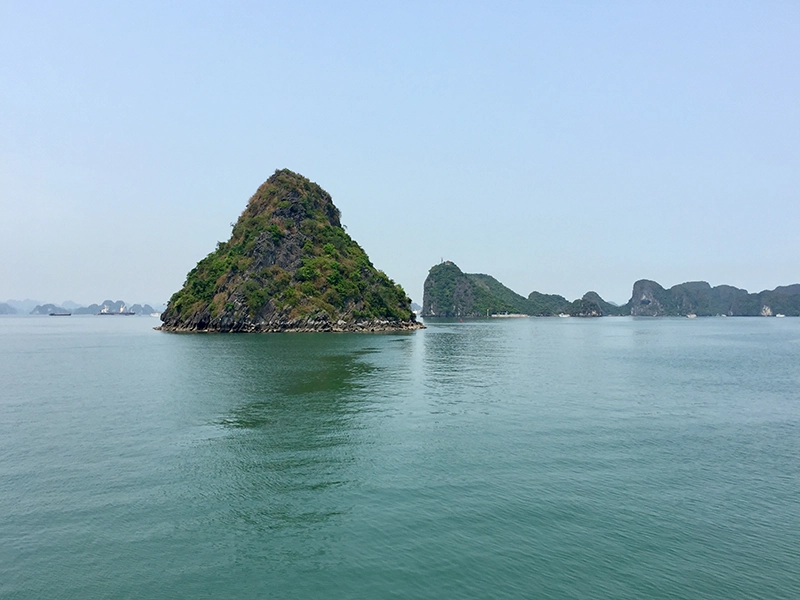
Ninh Binh
The province Ninh Binh is located south-west of Hanoi. The two main excursion locations are the ancient capital of Hoa Lư and Tam Cốc, which are part of the Tràng An Scenic Landscape Complex, a UNESCO World Heritage Site. Hoa Lư was the capital of Đại Cồ Việt (today northern Vietnam) until 1010. Its location, surrounded by mountains and rivers was perfect to defend it, but less perfect for trade.
During the Ninh Binh day trip I went on we cycled from Hoa Lư to Tam Cốc, where we had lunch with a local family, then visited a cave next to a Buddhist monastery and finally came to our last stop: the bank of the Ngô Đồng River where we boarded a sampan and paddled through the limestone mountains and rice fields locals also call “dry Ha Long Bay”.
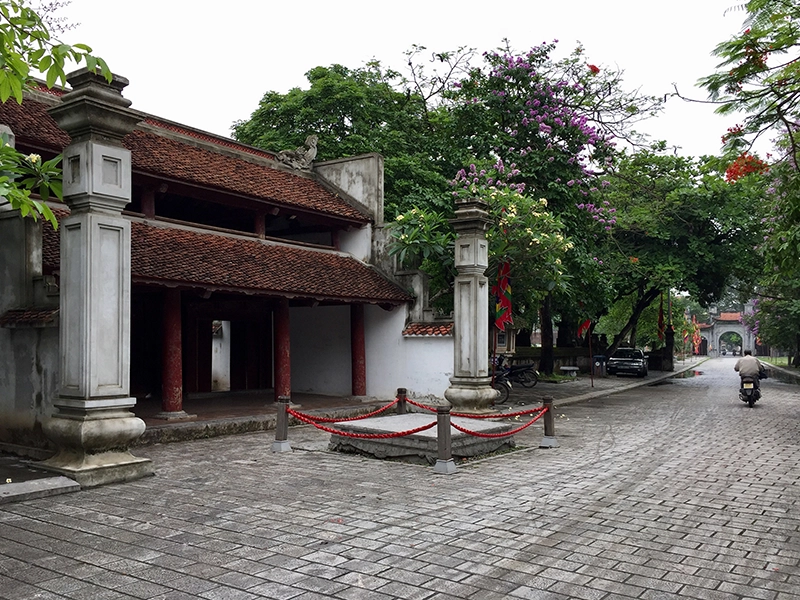

Tips for your Trip to Hanoi
Bottled water is your best friend
The water from the tap in Vietnam is not drinkable. To avoid dehydration in the tropical climate you have to drink enough though. So get bottled water and keep one bottle on yourself at all times.
Get an E-SIM
While public wifi is widespread in Hanoi, as well as free wifi at cafés and restaurants, none of it is very protected. A passwort that is 123456789 is about as safe as no password at all. So if you need to acess payment info or any sensitive data, better do it via mobile data on an E-Sim. I have had good experiences with airalo* in the past, since you can pick the plan that fits your needs best.
Hire a student guide for your Hanoi trip
Student Guides contact them through Trip Advisor* for the first trip, rate them, then when you enjoyed the tour, book directly since TripAdvisor takes over 20% commission. And they are happy about gas money since what’s left of the 5€ is usually a fee for connecting the students to tourists and they will pick you up and drive you around.

Grab VN
Upon arriving in Hanoi you’ll quickly realize that the best way to discover the ins and outs of this bustling city is on the back of a motorbike with a local. It’s also the best way to get from point A to point B.
To avoid scams, simply download the Grab VN App to your phone, set up a profile and add a payment method. Now you can book rides wherever and whenever and always see upfront what your ride will cost you. It also works for food deliveries.
Working Space Hanoi
All Day Coffee has strong and stable free WiFi, as well as good aircon. It’s a modern two story cafe in an industrial style. While working you can try different modern takes on vietnamese coffee, selfmade lemonades and tea-drink creations like Earl Grey Hot Chocolate.
They also have two bookshelves with books you can read while you’re there, sipping on your tea.
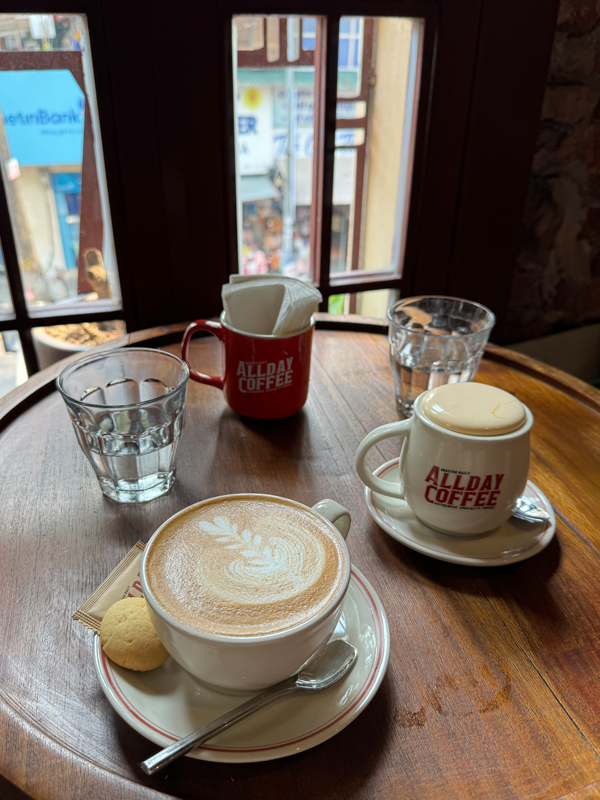
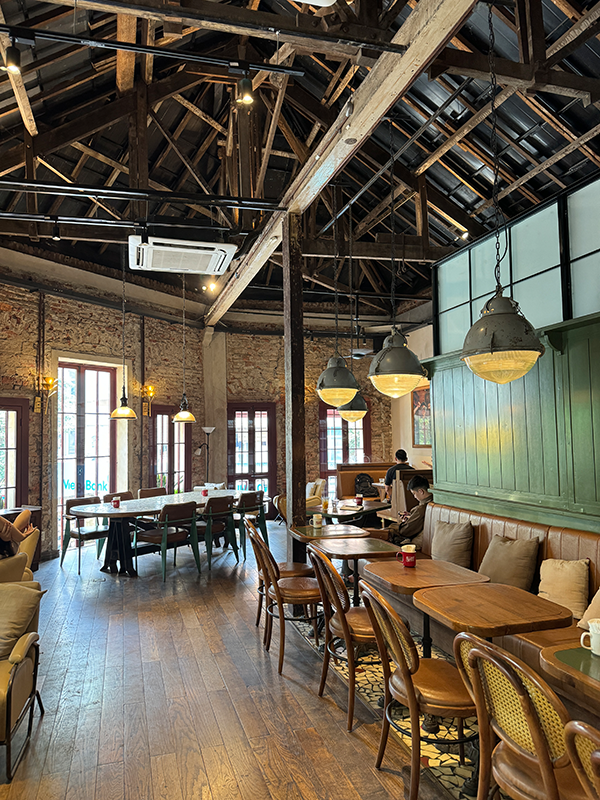

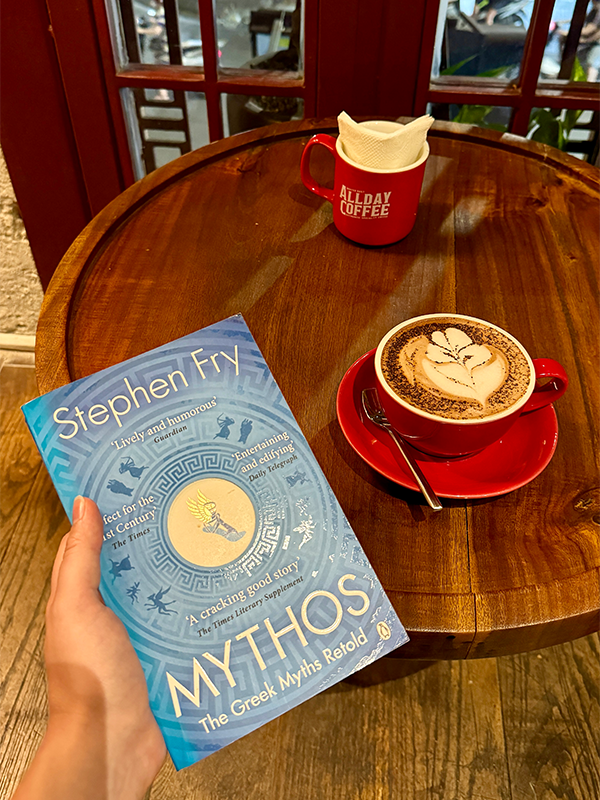
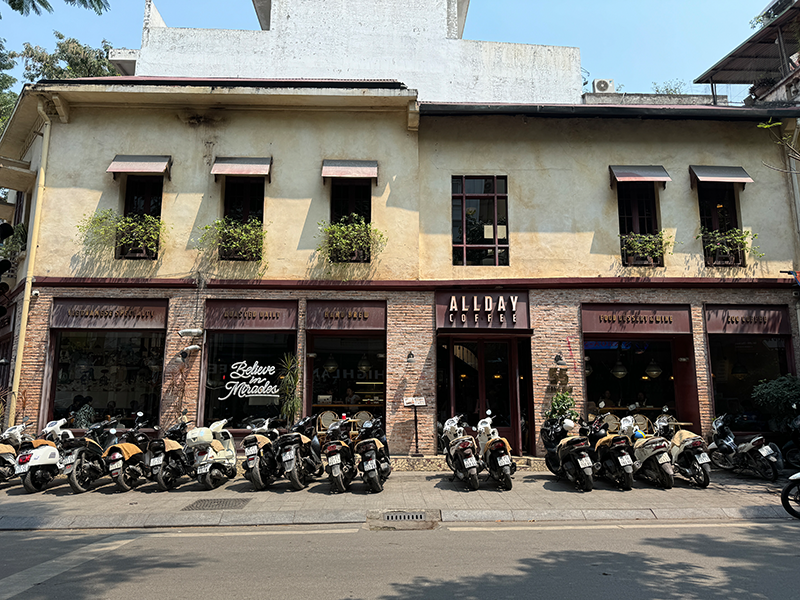
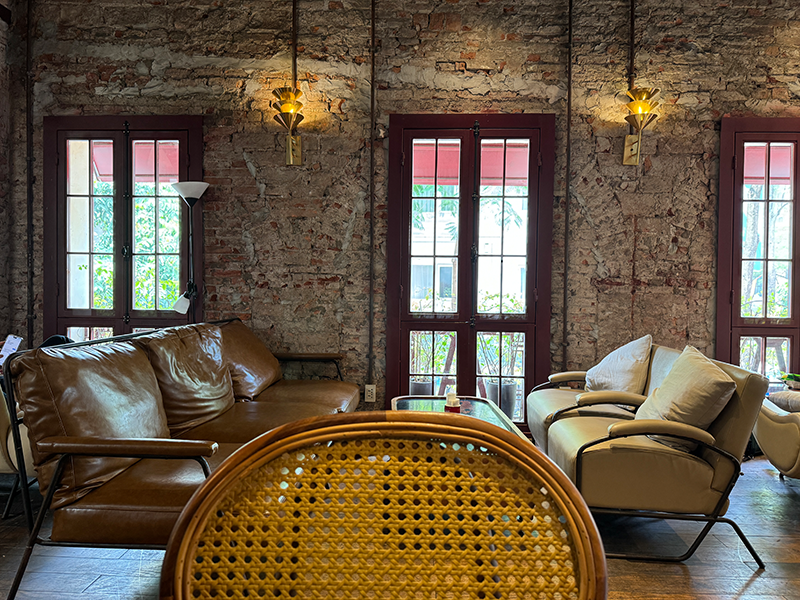
Map for your trip to Hanoi
How to read the map: The orange ones are the restaurants and street food, the green spots are cafes, the blue are spots to visit I mentioned above and the reds are everything I couldn’t categorise. You can open the menu on the top left and choose the layers of the map.
You are currently viewing a placeholder content from Google Maps. To access the actual content, click the button below. Please note that doing so will share data with third-party providers.
More InformationYou can save the map to your Google Maps for your trip to Hanoi by clicking here.


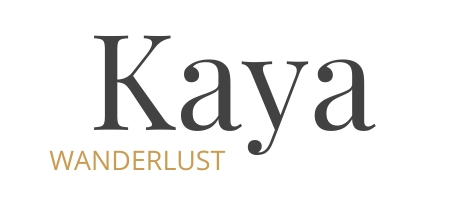

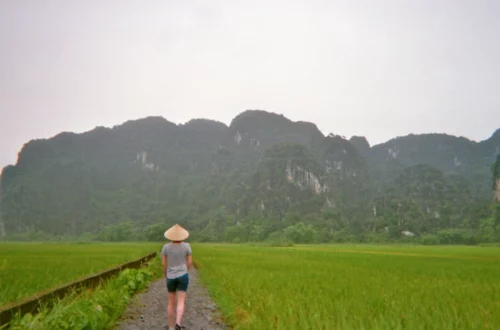
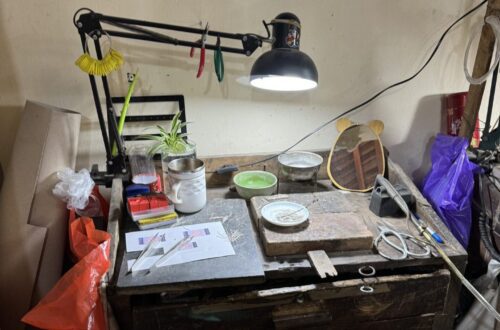
3 Comments
Pingback:
Pingback:
Pingback: